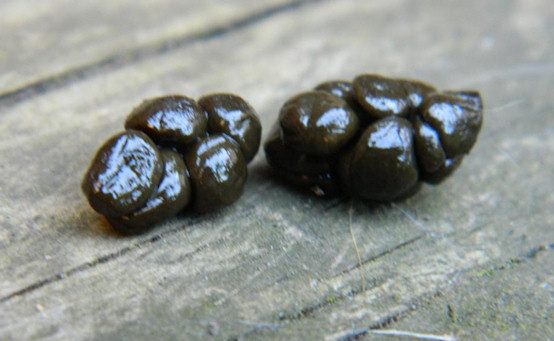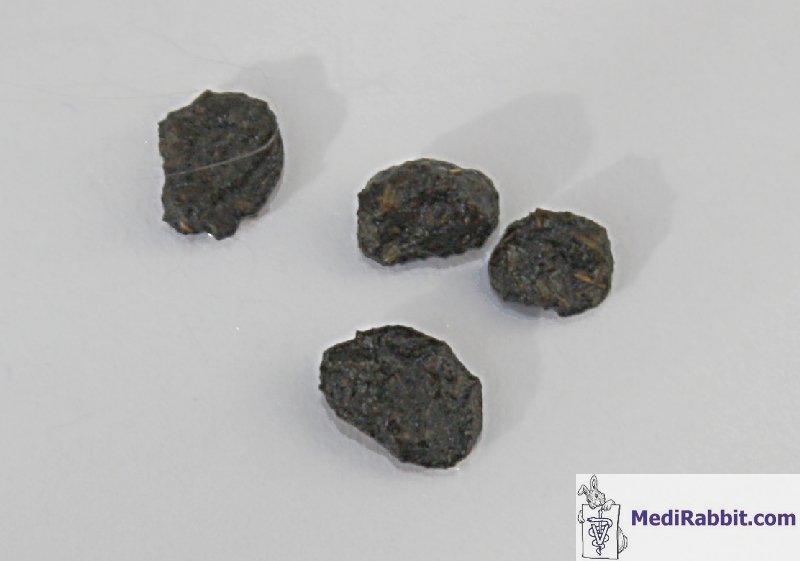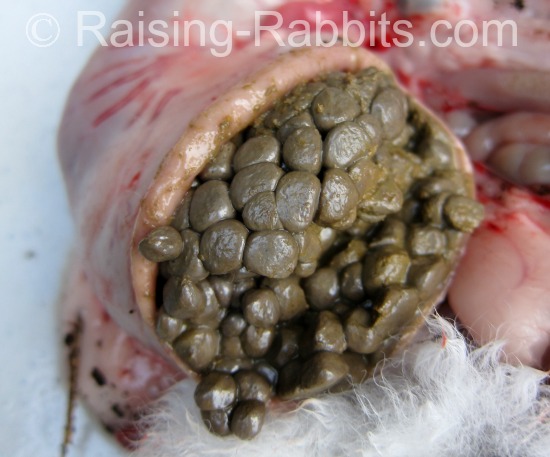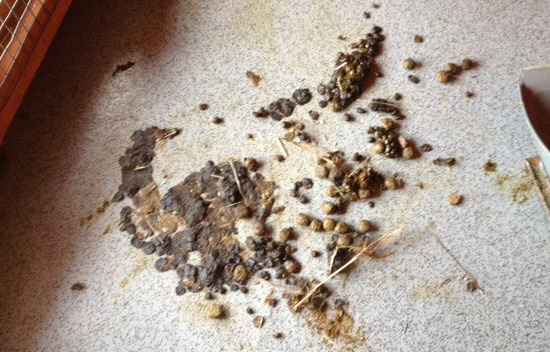Cecotrope
As Caecotrophie (from cecum and trophic status ) is called the regular inclusion of a specific form of feces ( Blinddarmkot ) by some species of herbivores, making them achieve a better utilization of indigestible plant food. The Caecotrophie is a special form of coprophagy. One finds this particular adaptation to the plant-based diet, among other things in rodents ( Rodentia ) and lagomorphs ( Lagomorpha ).
These animals produce two types of feces. During the day, they give off the normal, dark droppings in the form of small dry bale, which is not eaten. This also includes any usable leftover food more.
However, during the rest period, these animals differ from the so-called Blinddarmkot. These are moist, encased in mucus, soft and lighter balls or grapes, called Caecotrophe. The animals take this after being excreted from the anus immediately back on and swallow it whole. This process is usually observed as a kind of cleaning movement in the animals. The resumed Caecotrophe are first stored in the anterior fundus of the stomach, where, surrounded by a membrane, are further fermented by bacteria for several hours. This produces, among other lactic acid. The fundus of animals thus functions in a manner similar to the rumen of ruminants as a fermentation chamber. The Caecotrophie can therefore be regarded as a variant of rumination. Only later the remaining Caecotrophe are gradually digested with the remaining stomach contents.
The purpose of this behavior lies in the better utilization of food. The material of these balls comes from the cecum, where it has already been subjected to bacterial fermentation. It is essential in protein and more bacteria than the normal feces. The double passage of 80 to 100 percent of food through the alimentary canal and the associated better utilization of the digested by the bacteria is food in the diet of animals is crucial. Also, an adequate supply of animals with vitamins, especially the B group, formed by bacteria is ensured by the coprophagia.
The proportion of the total Blinddarmkots feces is over 30 %. If the coprophagy prevents rats require additional vitamin K, and biotin sources. Symptoms of deficiency of other vitamins occur earlier, and their growth rate is reduced despite abundant food by 15 to 25 percent. The size of the cecum is very different in rodents. A correlation to the diets is very clear.










